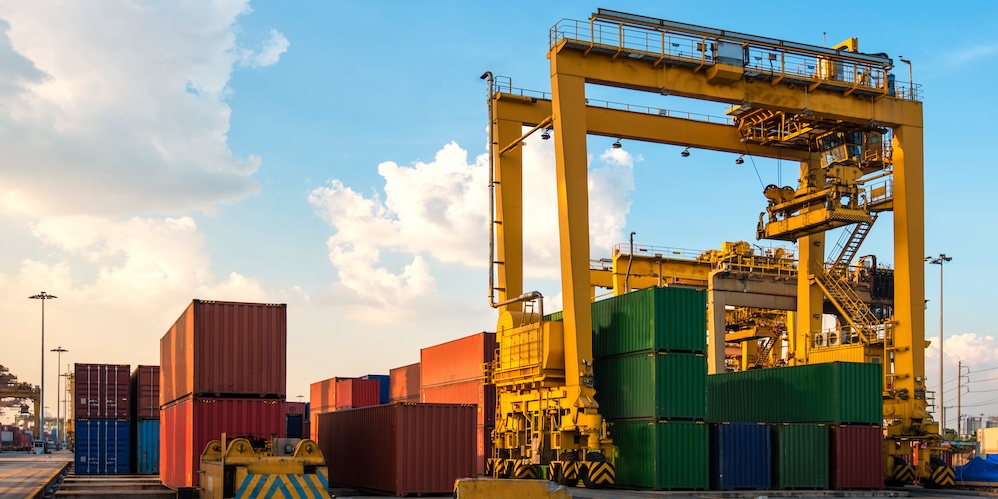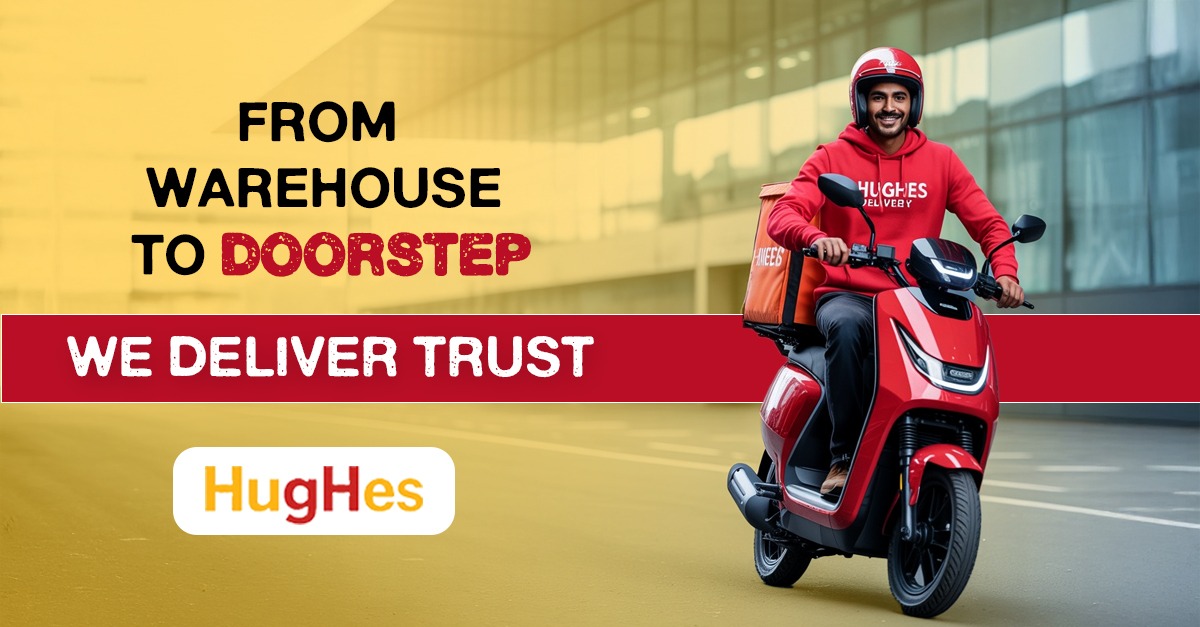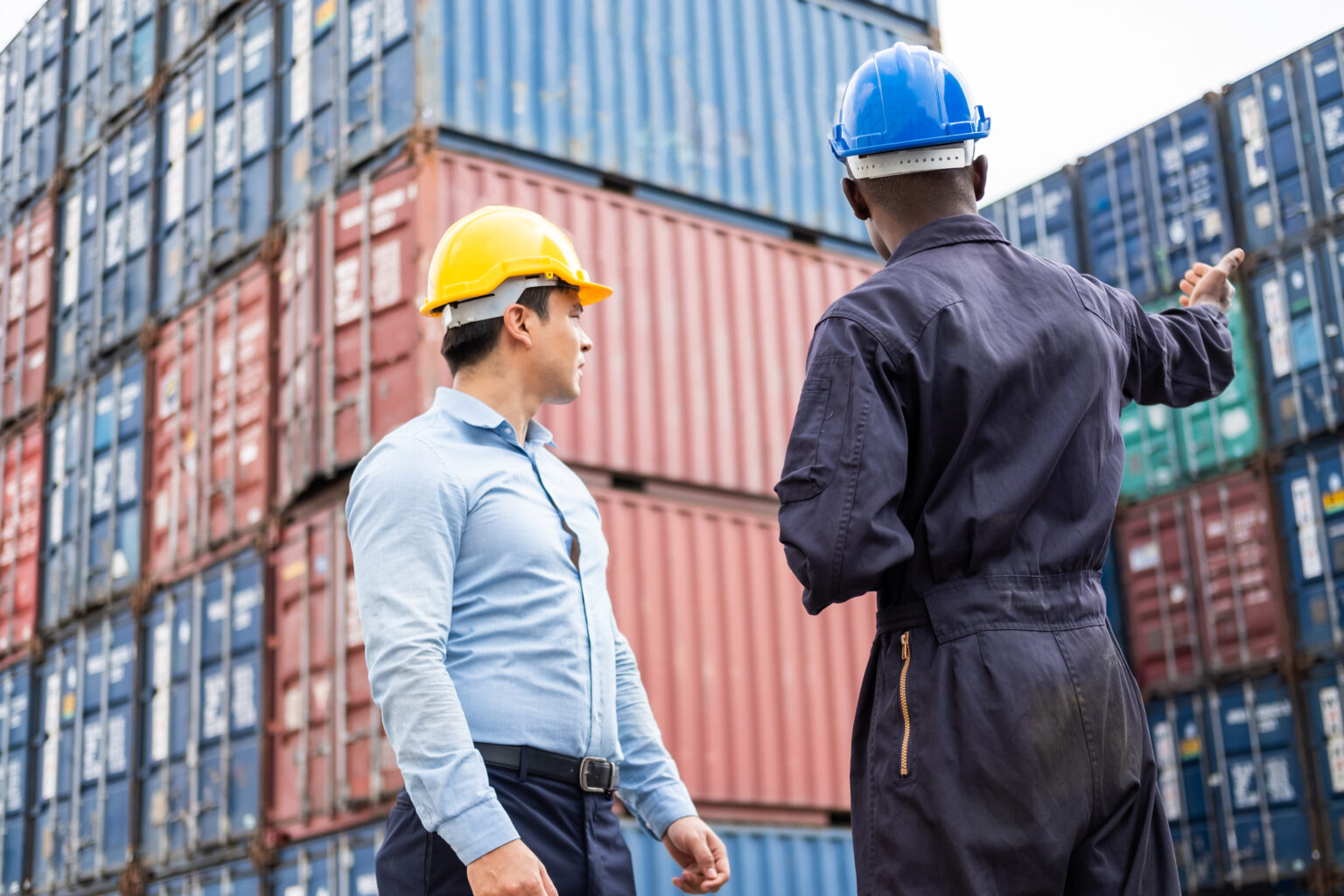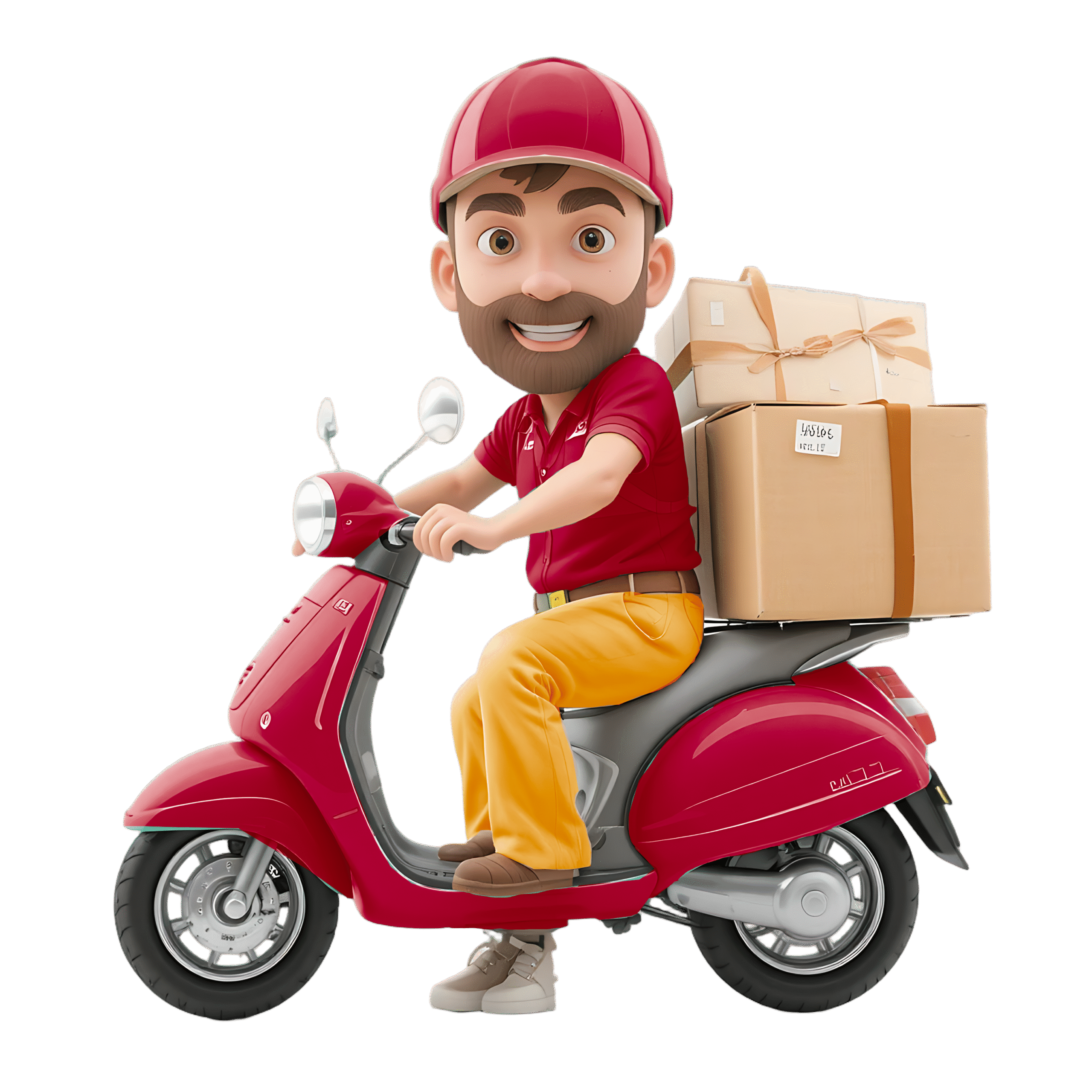table of contents
- Definition and Process
- Why Transloading Matters
- Real-World Applications
- Transloading vs. Cross-Docking
- Step 1: Arrival at the Transloading Facility
- Step 2: Unloading and Inspection
- Step 3: Sorting and Preparation
- Step 4: Temporary Storage (if necessary)
- Step 5: Loading onto the New Transport Mode
- Step 6: Documentation and Dispatch
- Key Considerations Throughout the Process
- Benefits of a Well-Executed Transloading Process
- Material Handling Equipment
- Specialized Transport Equipment
- Technology and Software
- Safety Equipment
- Specialized Storage Solutions
- Maintenance Tools
- Loading and Unloading Zones
- Storage Areas
- Sorting and Consolidation Areas
- Transportation Access
- Office and Administrative Spaces
- Security Infrastructure
- Technology Integration
- Environmental Controls
- Maintenance Areas
- Customs and Compliance Facilities
- Cost Efficiency
- Improved Flexibility
- Enhanced Sustainability
- Increased Speed to Market
- Enhanced Inventory Management
- Expanded Market Reach
- Risk Mitigation
- Customization and Value-Added Services
- Coordination Complexity
- Handling and Damage Risks
- Time Management
- Cost Control
- Regulatory Compliance
- Technology Integration
- Inventory Visibility
- Quality Control
- Environmental Concerns
- Scalability
- Transloading vs. Cross-Docking
- Transloading vs. Warehousing
- Transloading vs. Direct Shipping
- Transloading vs. Intermodal Transportation
- Choosing the Right Method
- Integrating Multiple Methods
Transloading is revolutionizing supply chain management in today’s fast-paced global economy. This innovative process optimizes logistics, enhancing efficiency and streamlining operations for businesses worldwide.
Understanding transloading is crucial for grasping the intricacies of modern shipping practices and the interconnected global marketplace. From its real-world applications to its distinct advantages over other logistics processes like cross-docking, transloading offers numerous benefits for optimizing supply chains.
Businesses seeking to streamline their logistics and individuals curious about contemporary shipping methods will find valuable insights into this essential tool. Transloading’s increasing role in the logistics industry highlights its importance in developing efficient and cost-effective supply chain strategies.
Exploring transloading uncovers its potential to transform how goods move across the globe. By examining the fundamental ideas, uses, and benefits, businesses and consumers can gain a deeper understanding of the complex operations of contemporary logistics and their influence on our everyday experiences.
Essential Insights into Transloading
Transloading is a pivotal process in modern logistics that’s reshaping how goods move across the globe. Transloading involves transferring cargo from one mode of transportation to another during its journey from the manufacturer to the end consumer.
Definition and Process
Transloading is defined as the practice of transferring a shipment from one mode of transportation to another. This could involve moving goods from:
- Ships to trucks
- Trains to planes
- Trucks to ships
- Any combination of transport modes
The process typically unfolds as follows:
- Goods arrive at a transloading facility via one mode of transport
- The cargo is unloaded from the original container or vehicle
- It’s then sorted, sometimes repackaged, and prepared for the next leg of its journey
- The goods are then loaded onto a different mode of transport for continued shipment.
Why Transloading Matters
Transloading has become increasingly important in today’s complex supply chains for several reasons:
- Flexibility: It allows shippers to adapt to changing market conditions and transportation availability.
- Efficiency: By optimizing the use of different transport modes, transloading can significantly reduce shipping times and costs.
- Global Reach: Transloading facilitates the movement of goods across vast distances and varied terrains, enabling truly global commerce.
Real-World Applications
Transloading is applied daily in various industries:
- Retail: Large retailers often use transloading to move products from overseas manufacturers to distribution centers and then to individual stores.
- Agriculture: Grain and other agricultural products are frequently transloaded from trucks to trains or ships for more efficient long-distance transport.
- Manufacturing: Automotive parts might be transloaded from ocean containers to specialized car-carrying trucks for final delivery to assembly plants.
- E-commerce: Online retailers use transloading to expedite deliveries, moving goods from large shipments to smaller, more agile delivery vehicles for last-mile service.
Transloading vs. Cross-Docking
While both transloading and cross-docking are important logistics processes, they serve different purposes:
| Transloading | Cross-Docking |
| Involves changing modes of transportation | Typically uses the same mode of transportation |
| Goods may be stored temporarily | Minimal to no storage time |
| Often used for long-distance, international shipping | Commonly used for regional distribution |
| May involve repackaging or sorting | Usually maintains original packaging |
Understanding these differences is crucial for businesses to choose the right strategy for their specific logistics needs.
By leveraging transloading, companies can create more resilient and adaptable supply chains, better equipped to handle the challenges of global commerce. This process is transforming the logistics environment and providing businesses with a competitive edge in an increasingly interconnected world.
The Transloading Process Step-By-Step
The transloading process is a crucial operation in logistics and supply chain management. Let’s explore this complex procedure by breaking it down into manageable steps, providing clarity on how goods move from one mode of transportation to another.
Step 1: Arrival at the Transloading Facility
The process begins when the shipment arrives at a designated transloading facility. This could be a port for ocean freight, a rail yard for train shipments, or a warehouse for truck deliveries.
Upon arrival, the facility’s system logs the shipment, and staff verify its details against the shipping manifest.
Step 2: Unloading and Inspection
Once the shipment is registered, workers unload the goods from the original transport mode (e.g., container ship, train, or truck). The cargo then undergoes a thorough inspection to ensure no damage occurred during transit, the quantity matches the shipping documents, and the goods meet quality standards.
Step 3: Sorting and Preparation
After inspection, the goods are sorted based on destination, priority, and type of product. This step may involve breaking down large pallets into smaller units, repackaging goods for the next mode of transport, or consolidating items from different shipments.
Step 4: Temporary Storage (if necessary)
Sometimes, goods may need brief storage before the next leg of their journey. This could be due to scheduling conflicts, customs clearance procedures, or consolidation with other shipments.
Modern transloading facilities often offer climate-controlled storage to protect sensitive goods during this interim period.
Step 5: Loading onto the New Transport Mode
Once the goods are prepared and the next mode of transport is ready, the cargo is carefully loaded onto the new vehicle or container. It’s secured to prevent damage during transit, and the load is balanced to ensure safe and efficient transport.
Step 6: Documentation and Dispatch
Before the shipment departs, new shipping documents are prepared, reflecting the change in transport mode. The cargo’s details are updated in tracking systems, and any necessary customs documentation is processed.
The shipment has been dispatched to continue its journey to the next destination or point of delivery.
Key Considerations Throughout the Process
Throughout these steps, several factors are constantly monitored:
- Efficiency: Time is critical in transloading. Each step is optimized to minimize delays.
- Safety: Proper handling procedures are followed to protect both workers and cargo.
- Compliance: All operations adhere to relevant regulations and industry standards.
- Communication: Regular updates are provided to stakeholders about the shipment’s status.
Benefits of a Well-Executed Transloading Process
When done correctly, transloading offers numerous advantages:
- Cost Savings: By optimizing transport modes, companies can significantly reduce shipping costs.
- Flexibility: The ability to switch between transport modes allows for adaptability to unforeseen circumstances.
- Speed: Transloading can often expedite deliveries by utilizing the most efficient combination of transport methods.
- Expanded Reach: It enables businesses to serve markets that might be inaccessible with a single mode of transport.
A thorough understanding of this step-by-step process helps businesses appreciate the complexity and value of transloading in modern logistics. By leveraging this method effectively, companies can enhance their supply chain efficiency, reduce costs, and improve their overall competitiveness in the global marketplace.
Essential Equipment In Transloading Operations
Efficient transloading operations rely heavily on specialized equipment to ensure smooth, safe, and timely transfer of goods between different modes of transportation. Let’s explore the key equipment categories that form the backbone of modern transloading facilities.
Material Handling Equipment
Forklifts
Forklifts are the workhorses of transloading operations. They are versatile for various load types, available in different weight capacities, and essential for moving pallets and containers.
Cranes
Cranes play a crucial role in handling heavy or oversized cargo. They include overhead cranes for indoor operations, mobile cranes for outdoor and flexible use, and gantry cranes for container handling at ports.
Conveyor Systems
Conveyor systems streamline the movement of smaller items and reduce manual handling and labor costs. They increase efficiency in high-volume operations and can be customized for different product types.
Specialized Transport Equipment
Intermodal Containers
These standardized containers are essential for seamless transitions. They are compatible with ships, trains, and trucks, available in various sizes (20ft, 40ft, 45ft), and secure and weather-resistant.
Bulk Cargo Solutions
For handling loose materials like grains or minerals, specialized solutions are necessary. These include specialized hoppers and silos, pneumatic conveying systems, and bulk container liners.
Technology and Software
Warehouse Management Systems
Modern transloading facilities function like an efficient distribution center, relying heavily on advanced Warehouse Management Systems (WMS). These systems track inventory in real-time, optimize storage and retrieval processes, and coordinate shipments and transport modes.
RFID and Barcode Scanners
These technologies enhance tracking and reduce errors. They provide quick and accurate identification of goods, streamline check-in and check-out processes, and improve inventory management.
GPS Tracking Systems
GPS technology provides real-time location updates for in-transit shipments and better planning and coordination of arrivals and departures. It also enhances security and theft prevention.
Safety Equipment
Ensuring worker safety is paramount in transloading operations. Essential safety equipment includes Personal Protective Equipment (PPE) like hard hats, safety vests, and steel-toed boots, safety barriers and signage, and emergency response equipment.
Specialized Storage Solutions
Different goods require different storage conditions. These may include temperature-controlled units for perishables, hazardous material containment areas, and rack systems for efficient space utilization.
Maintenance Tools
Regular maintenance ensures equipment reliability. Necessary tools include diagnostic equipment for forklifts and other machinery, cleaning equipment to maintain hygiene standards, and repair kits for quick fixes and minimized downtime.
The right combination of this essential equipment enables transloading facilities to handle a wide variety of goods efficiently, from small parcels to oversized industrial machinery.
By investing in modern, well-maintained equipment, transloading operations can significantly enhance their capacity, speed, and reliability, ultimately providing better service to their clients in the dynamic field of global logistics.
Transloading Facilities: Key Components
Transloading facilities serve as crucial hubs where goods are efficiently transferred between different modes of transportation. These buildings are carefully designed to improve efficiency, ensure safety, and enable seamless logistics operations.
Loading and Unloading Zones
The heart of any transloading facility lies in its loading and unloading zones. These areas typically include:
- Spacious docks to accommodate various vehicle types
- Multiple bays for simultaneous operations
- Adjustable loading platforms for different truck heights
- Well-marked areas for efficient traffic flow
Storage Areas
Temporary storage frequently plays an important part in transloading activities. Key storage components include:
- Short-term warehousing for goods in transit
- Climate-controlled areas for sensitive products
- Secure storage for high-value items
- Bulk storage solutions for commodities
Sorting and Consolidation Areas
These areas are essential for organizing shipments effectively. They typically feature:
- Conveyor systems for efficient sorting
- Packing stations for repackaging or consolidation
- Labeling and documentation stations
- Quality control checkpoints
Transportation Access
Accessibility is paramount for smooth operations in transloading facilities. Important access points include:
- Rail sidings for direct train access
- Truck yards with ample parking and maneuvering space
- Proximity to ports for seamless sea-to-land transfers
- Potential for air freight connections
Office and Administrative Spaces
Efficient management requires dedicated spaces for various administrative functions. These typically include:
- Control rooms for overseeing operations
- Administrative offices for paperwork and coordination
- Meeting rooms for client consultations
- Staff facilities including break rooms and lockers
Security Infrastructure
Protecting goods and ensuring safety is a top priority in transloading facilities. Key security features often include:
- Perimeter fencing and controlled access points
- CCTV surveillance systems
- Security personnel stations
- Fire suppression systems
Technology Integration
Modern transloading facilities utilize technology to improve operations. Common technological integrations include:
- Wi-Fi coverage for real-time data access
- Digital display boards for operational updates
- Automated systems for inventory tracking
- Connection with transportation management systems
Environmental Controls
Maintaining appropriate conditions is essential for various types of goods. Environmental control measures often include:
- HVAC systems for temperature-sensitive goods
- Dust control measures for bulk commodities
- Proper ventilation for worker comfort and safety
- Spill containment systems for hazardous materials
Maintenance Areas
Keeping equipment in top condition ensures smooth operations. Maintenance areas typically include:
- Workshops for equipment repairs
- Cleaning stations for containers and vehicles
- Fuel stations for forklifts and other machinery
- Storage for spare parts and maintenance supplies
Customs and Compliance Facilities
For international shipments, dedicated areas are necessary to meet regulatory requirements. These often include:
- Customs inspection zones
- Quarantine areas for agricultural products
- Documentation processing stations
- Compliance check areas for regulated goods
By integrating these key components, transloading facilities create a seamless environment for the efficient movement of goods. The layout and design of these facilities are carefully planned to minimize handling time, reduce the risk of damage, and ensure that products flow smoothly from one mode of transportation to another.
As global trade continues to change and adapt, these facilities play an increasingly crucial role in optimizing supply chains and meeting the demands of modern logistics.
The thoughtful combination of these components allows transloading facilities to adapt to changing market needs and technological advancements, ensuring they remain at the forefront of efficient logistics operations.
Benefits Of Implementing Transloading Strategies
Transloading strategies offer numerous advantages for businesses looking to optimize their supply chain operations. Let’s explore the key benefits that make transloading an attractive option for many companies.
Cost Efficiency
Implementing transloading can lead to significant cost savings. Here are some ways transloading contributes to cost efficiency:
- Reduced transportation costs by utilizing the most efficient modes for each leg of the journey
- Lower warehousing expenses due to decreased need for long-term storage
- Minimized handling costs through streamlined processes
- Potential for bulk shipping discounts on longer routes
Improved Flexibility
Transloading provides greater adaptability in logistics. Consider these flexibility benefits:
- Ability to quickly respond to changes in demand or supply chain disruptions
- Easier rerouting of shipments to meet evolving market needs
- Capacity to handle various types of cargo and packaging
- Opportunity to consolidate smaller shipments for more efficient transport
Enhanced Sustainability
Reduced Carbon Footprint
Transloading contributes to greener logistics in several ways:
- Optimized use of transportation modes, reducing overall emissions
- Decreased reliance on long-haul trucking in favor of more eco-friendly options like rail
- Improved load efficiency, leading to fewer partially filled containers
Sustainable Logistics Practices
Transloading aligns with sustainable supply chain management through:
- Connecting the inbound logistics process to reduce waste and improve efficiency
- Opportunity to implement reverse logistics for recycling and reuse
- Potential for using alternative fuels in short-haul transport segments
Increased Speed to Market
Transloading can accelerate product delivery through:
- Reduced transit times through optimized routing
- Minimized delays at ports or border crossings
- Faster distribution to multiple destinations from a central transloading point
- Ability to bypass congested areas or bottlenecks in the supply chain
Enhanced Inventory Management
Transloading improves control over stock levels and distribution:
- Real-time visibility of inventory in transit
- Ability to postpone final destination decisions until later in the shipping process
- Reduced need for safety stock at multiple locations
- Easier implementation of just-in-time inventory strategies
Expanded Market Reach
Transloading facilitates broader market access by:
- Enabling service to markets that lack direct transportation links
- Easing entry into new geographic regions
- Enhancing capacity to handle international shipments more efficiently
- Offering more competitive delivery options to customers
Risk Mitigation
Transloading strategies can help manage supply chain risks through:
- Diversification of transportation modes to reduce dependency on a single method
- Increased ability to adapt to unexpected events or disruptions
- Improved product integrity through specialized handling at transloading facilities
- Enhanced security measures during the transfer process
Customization and Value-Added Services
Transloading enables customized logistics solutions, including:
- Opportunity for product customization or final assembly at transloading points
- Ability to provide value-added services such as packaging, labeling, or quality control
- Flexibility to meet specific customer requirements or regulations
- Potential for creating unique service offerings to differentiate from competitors
By leveraging these benefits, businesses can significantly enhance their logistics operations, reduce costs, and improve customer satisfaction. Transloading strategies offer a powerful tool for companies looking to stay competitive in today’s fast-paced, global marketplace.
Challenges In Transloading And Mitigation Strategies
Transloading offers numerous benefits but also presents several challenges that businesses must address to ensure smooth operations. Let’s explore these challenges and the strategies to mitigate them effectively.
Coordination Complexity
Challenge: Transloading involves multiple parties and modes of transportation, making coordination a complex task.
Mitigation Strategies:
- Implement advanced logistics management software for real-time tracking and communication
- Establish clear protocols and responsibilities for all parties involved
- Conduct regular coordination meetings to address potential issues proactively
- Develop contingency plans for common disruptions
Handling and Damage Risks
Challenge: Additional handling during the transloading process increases the risk of product damage.
Mitigation Strategies:
- Invest in proper handling equipment and train staff in best practices
- Use appropriate packaging materials designed for multi-modal transport
- Implement quality control checks at each transfer point Ensure adequate insurance protection for goods during transportation.
Time Management
Challenge: Transloading can potentially introduce delays if not managed efficiently.
Mitigation Strategies:
- Optimize scheduling to minimize wait times between transport modes
- Use data analytics to identify and address bottlenecks in the process
- Establish time-based performance metrics for each stage of transloading
- Consider buffer times in schedules to account for unforeseen delays
Cost Control
Challenge: While transloading can reduce overall costs, it may incur additional expenses in certain areas.
Mitigation Strategies:
- Conduct thorough cost-benefit analyses for each transloading operation
- Negotiate volume-based discounts with transportation providers
- Explore opportunities for backhaul and consolidation to maximize efficiency
- Regularly review and optimize transloading processes to identify cost-saving opportunities
Regulatory Compliance
Challenge: Different modes of transportation and jurisdictions may have varying regulatory requirements.
Mitigation Strategies:
- Stay informed about relevant regulations in all areas of operation
- Partner with experienced logistics providers familiar with multi-modal transport regulations
- Implement a robust compliance management system
- Provide regular training to staff on regulatory requirements and updates
Technology Integration
Challenge: Integrating various technological systems across different transport modes and partners can be challenging.
Mitigation Strategies:
- Invest in scalable, cloud-based logistics management platforms
- Ensure compatibility of systems between partners or use API integrations
- Prioritize cybersecurity measures to protect data across all touchpoints
- Provide thorough training on new technologies to all relevant staff
Inventory Visibility
Challenge: Maintaining accurate inventory visibility during the transloading process can be difficult.
Mitigation Strategies:
- Implement RFID or IoT-based tracking systems for real-time inventory monitoring
- Use blockchain technology for transparent and immutable record-keeping
- Conduct regular audits to ensure accuracy of inventory data
- Establish clear communication channels for inventory updates between all parties
Quality Control
Challenge: Maintaining consistent quality control across different handling points can be challenging.
Mitigation Strategies:
- Develop standardized quality control procedures for all transloading points
- Implement rigorous inspection processes at each transfer
- Use technology such as digital imaging for remote quality inspections
- Establish clear accountability measures for quality issues
Environmental Concerns
Challenge: While transloading can improve overall efficiency, it may still have environmental impacts.
Mitigation Strategies:
- Optimize routes and loads to minimize carbon emissions
- Explore use of alternative fuels or electric vehicles for short-haul transport
- Implement sustainable practices at transloading facilities
- Partner with environmentally conscious transportation providers
Scalability
Challenge: As businesses grow, scaling transloading operations can become complex.
Mitigation Strategies:
- Design flexible transloading processes that can adapt to changing volumes
- Invest in modular infrastructure that can be easily expanded
- Develop partnerships with multiple logistics providers to ensure capacity
- Regularly reassess and adjust transloading strategies to align with business growth
By addressing these challenges with targeted mitigation strategies, businesses can maximize the benefits of transloading while minimizing potential drawbacks. The key lies in thoughtful planning, utilizing technology, and preserving adaptability to accommodate evolving logistics requirements.
Transloading Vs. Other Logistics Methods
Understanding how transloading compares to other common logistics methods is crucial for appreciating its role in modern supply chains. Let’s explore the key differences and similarities between transloading and other popular logistics approaches.
Transloading vs. Cross-Docking
While both transloading and cross-docking involve the transfer of goods, they serve different purposes.
Transloading:
- Involves changing the mode of transportation
- Goods may be stored temporarily
- Often used for long-distance, multi-modal shipments
Cross-Docking:
- Typically uses the same mode of transportation
- Minimal to no storage time
- Focuses on rapid distribution, often for local or regional deliveries
Transloading vs. Warehousing
Transloading:
- Temporary storage during transfer between transport modes
- Focuses on keeping goods moving through the supply chain
- Ideal for time-sensitive or high-volume shipments
Warehousing:
- Long-term storage of goods
- Allows for inventory management and order fulfillment
- Suitable for businesses with fluctuating demand or seasonal products
Transloading vs. Direct Shipping
Transloading:
- Involves multiple modes of transportation
- Allows for optimization of shipping routes and costs
- Suitable for complex supply chains or international shipments
Direct Shipping:
- Uses a single mode of transportation from origin to destination
- Simpler logistics, but potentially less flexible
- Ideal for short distances or when speed is the primary concern
Transloading vs. Intermodal Transportation
Transloading and intermodal transportation have distinct differences, despite often being confused.
Transloading:
- Goods are physically transferred between different modes of transport
- Allows for repackaging or consolidation of shipments
- Offers flexibility in handling various types of cargo
Intermodal Transportation:
- Uses standardized containers that can be transferred between modes without unloading
- Reduces handling of goods, potentially lowering damage risk
- Limited to cargo that fits in standard intermodal containers
Choosing the Right Method
Selecting the most appropriate logistics method depends on several factors:
- Distance: Transloading is often more beneficial for long-distance, international shipments.
- Time Sensitivity: Cross-docking or direct shipping may be preferable for urgent deliveries.
- Volume: High-volume shipments can benefit from the efficiency of transloading.
- Cost: The transloading process can often reduce overall shipping costs for complex routes.
- Flexibility: Transloading offers more options for route optimization and cargo handling.
- Infrastructure: Available transportation networks and facilities may dictate the best method.
- Product Type: Certain goods may require specific handling or storage conditions.
Integrating Multiple Methods
Many businesses use a combination of these logistics methods to optimize their supply chain.
For example:
- Using transloading for international shipments, then cross-docking for local distribution
- Combining warehousing for inventory management with transloading for efficient shipping
- Utilizing intermodal transportation for long-haul routes, then transloading for final delivery
By understanding the strengths and limitations of each logistics method, businesses can create a flexible and efficient supply chain strategy. This approach allows them to adapt to their specific needs and market conditions effectively.






